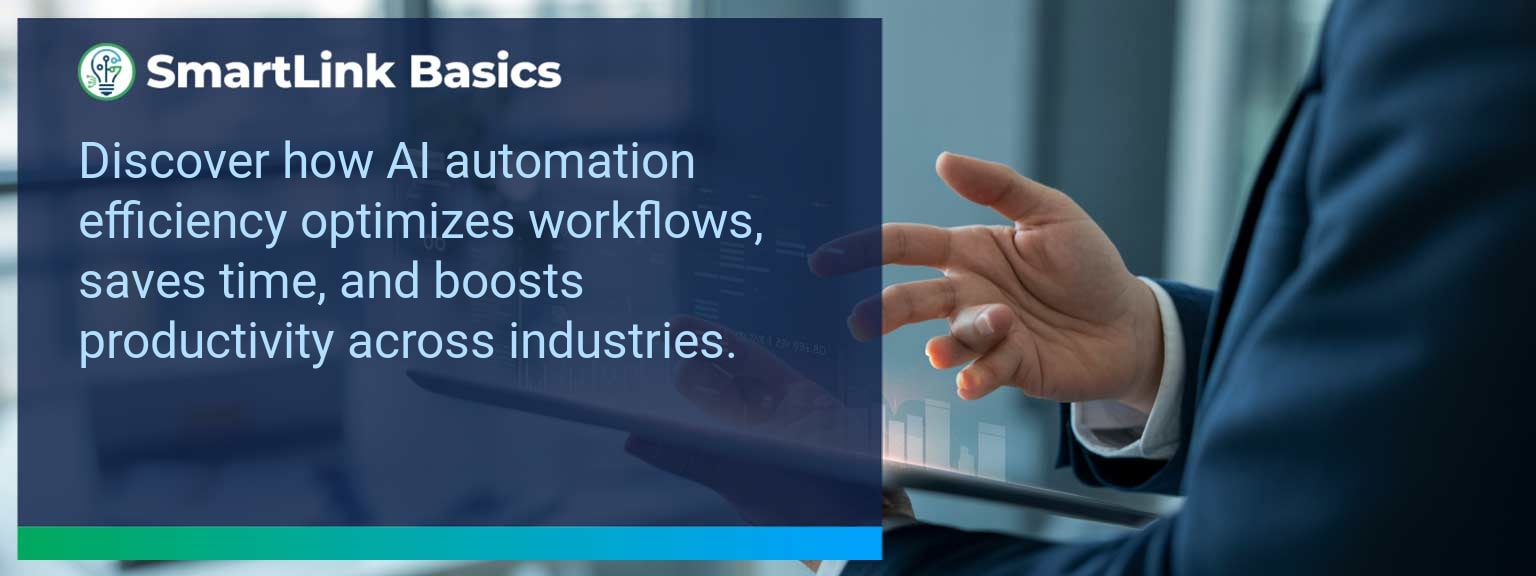Sales leaders who have integrated AI-driven automation into their operations see measurable gains in speed, accuracy, and scalability—often within a single quarter. At SmartLink Basics, we consistently find that organizations adopting AI automation efficiency in targeted, high-impact areas outperform peers in both revenue growth and cost reduction. This shift is not theoretical; it is reshaping competitive boundaries now. In the next few minutes, you will learn how to identify critical bottlenecks, overcome common barriers, and design AI-enabled workflows that deliver consistent productivity gains. You will also see specific metrics and execution steps to confidently operationalize AI in your sales process.
- Pinpoint and prioritize high-friction sales processes for automation.
- Select AI productivity tools matched to targeted workflows.
- Redesign sales operating cadence to leverage real-time analytics.
- Track leading, lagging, and quality metrics to validate ROI.
- Iterate automation workflows quarterly to compound efficiency.
What Changed and Why AI Automation Efficiency Matters Now
Enterprise buyers are demanding faster, more personalized engagement. Human-only processes cannot scale at the necessary pace or precision. AI automation efficiency allows teams to route leads instantly, adapt messaging to buyer behavior, and analyze pipeline health in real time.
One SaaS sales team reduced qualification delays from 48 hours to under 4 by integrating intelligent lead scoring into CRM workflows.
Leaders who act now can embed these capabilities as a core advantage before competitors catch up.
Redesigning the Revenue Operating System With AI Automation Efficiency
ICP, Segmentation, and Targeting
Use machine learning benefits to continually refine your ideal customer profile. AI models can detect micro-patterns in win rates that human review often misses. Apply dynamic segmentation to allocate resources toward those with highest conversion potential.
Pipeline Architecture
Automated systems can prioritize opportunities by likelihood to close, allowing revenue teams to focus energy on deals that matter. This also helps reduce forecast variance.
Plays and Messaging
Integrate AI productivity tools to generate context-specific sales plays. Intelligent software can suggest next actions based on deal stage and prior engagement data.
Operating Cadence
Schedule reviews based on event triggers rather than static dates. Workflow optimization ensures timely intervention when risk indicators appear.
Common Barriers To Achieving Productivity Gains
AI deployment falters when goals are vague or integration is partial. Without a clear automation blueprint, tools become underutilized. Resistance from experienced reps often stems from unclear benefit communication.
Example: An industrial supplier implemented automated quote generation without coordinating with field sales, resulting in process duplication.
Set a single owner for automation rollouts and map dependencies before launch to avoid such misalignment.
Leveraging Artificial Intelligence For Smarter Workflows
Embedding AI into business process automation requires more than technology procurement. It involves redesigning workflows to allow AI to act as a decision-support layer.
For example, routing inbound leads through automated systems that analyze fit scores before assigning to reps cuts manual triage time.
The most effective approach is incremental—start by automating high-volume, low-complexity tasks, then scale into higher-value functions.
Tangible Benefits Of Implementing Automation
Sales teams using AI productivity tools report faster response times, more accurate forecasting, and higher deal velocity.
One case saw proposal turnaround shrink from five days to under two, enabling a 12% lift in monthly closed revenue.
Sustained gains come from measuring, refining, and expanding automation’s scope with each quarter.
The Next Phase Of AI-Enhanced Work Efficiency
The coming evolution involves connecting systemic insights across marketing, sales, and customer success for true end-to-end digital transformation.
Centralized intelligence will recommend not only sales plays but also product roadmap adjustments based on aggregated buyer behavior trends.
Metrics That Matter
| Category | Metric | Definition | Target |
|---|---|---|---|
| Leading | Automation Coverage | % of targeted sales processes or reports automated | ≥ 70% |
| Leading | Automated Response Time | Average time from inbound inquiry to AI-assisted first response | < 1 hour |
| Lagging | Cycle Time to Proposal | Average time from qualified request to proposal sent | < 24 hours |
| Lagging | Forecast Accuracy | Variance between projected and actual closed revenue | ≤ 5% |
| Quality | Workflow Adoption Rate | % of reps consistently following automated workflows | ≥ 90% |
| Quality | Stakeholder Satisfaction | Average rating of speed and accuracy of AI-enabled outputs | ≥ 4.5/5 |
Get the 90-day plan, coaching rubric, and dashboard template to operationalize AI in your enablement program.
Deploying AI For Lasting Sales Efficiency Gains
AI automation efficiency is now a decisive factor in operational competitiveness. The leaders who integrate machine learning benefits, workflow optimization, and intelligent software into sales operations will outpace those who delay. A focused, measured rollout with clear metrics ensures lasting impact. Get more Sales Leadership insights from SmartLink Basics to guide your next strategic move.









